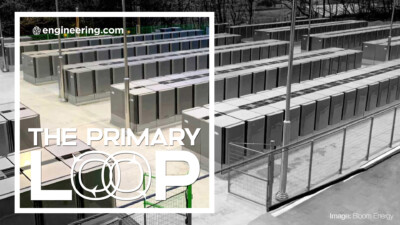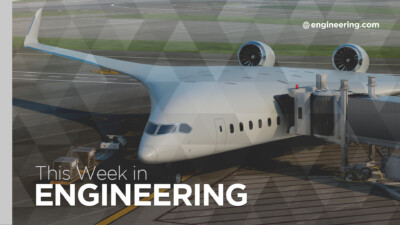Carbon capture company Spiritus picked up the CO2 tab for Swift’s flight with a novel technology.
Carbon capture technology company Spiritus novel adsorbent-based direct air capture technology for CO2 in a unique way: by offsetting the carbon footprint of Taylor Swift’s recent transpacific jet flight from Tokyo to Las Vegas for the Super Bowl. At current pricing, carbon neutrality for this single flight cost $28,000. But the company claims that the cost of removing CO2 by direct capture can be reduced by a factor of seven. If it works, Taylor Swift’s flight would have cost $4,000 to achieve neutrality, and the average American passenger car could be made carbon neutral for about $40 per month. At that pricing, it may be possible to keep the internal combustion engine relevant for decades to come.
Access all episodes of This Week in Engineering on engineering.com TV along with all of our other series.
* * *
Episode Transcript:
When the Kansas City Chiefs won their historic Super Bowl victory in Las Vegas, millions of people were watching who had no interest whatsoever in the NFL: Taylor Swift fans.
The pop diva has been a star attraction at Chiefs’ games all year, but to get to the Super Bowl, she flew from Tokyo, Japan, site of a recent concert, to Los Angeles — a distance of some 5,488 miles. That flight was made in the comfort of a Bombardier Global 6000, flying at 39,000 feet with a 652 knot ground speed on average.
It’s a comfortable way to travel, but like all private jets, CO2 emissions per passenger mile are considerable: Swift’s transpacific flight generated an estimated 40 tons of CO2. In one of the more clever guerrilla marketing efforts of the year, that CO2 was offset courtesy of Los Alamos, New Mexico-based Spiritus.
The company has developed a direct air capture CO2 removal technology which the company claims is scalable and capable of removing carbon dioxide on megaton scales. The Spiritus system uses silo-like machines the company calls “carbon orchards” where ambient air circulates passively across a proprietary solid sorbent that the company calls “fruit,” where CO2 is adsorbed. The “fruit” is then passed into a desorption system where the CO2 is stripped off the sorbent, which is then cycled back into the airstream.
From an engineering perspective, absorbent types of CO2 capture are technically both simple and elegant with the right materials, but the secret sauce is in removing the CO2 from the sorbent surface.
This can be achieved by heat, vacuum or combination of both, in a process called vacuum temperature swing adsorption, but Spiritus uses a proprietary low-temperature desorption process, which the company claims can reduce both energy requirements and overall system cost. And costs with current technology are high, typically on the order of $700 per ton of removed CO2.
Spiritus believes that their technology can reduce the cost to below $100 per ton, a carbon price level which could introduce some interesting economics into the CO2 balance equation. A typical passenger car emits about 4 ½ tons of CO2 per year, so if an internal combustion engine’s emissions are offset with the projected Spiritus system, net zero emissions could be achieved at a cost of approximately $40 per month.
Current U.S. electric vehicle pricing is approximately $5,000 higher than average internal combustion engine models, so if fossil fuel offsets were charged at the $40 a month rate for internal combustion engines, it would take about a dozen years to match the price premium for an electric vehicle.
This is coincidentally about the average age of cars and trucks in the American consumer fleet. From an economic perspective, this would make the consumer choice for electric vehicles dependent almost entirely on factors like the cost of charging, maintenance and insurance.
In essence, advanced direct air capture technologies like the Spiritus system would be a new lease on life for traditional fossil fuel combustion technologies in transportation and power generation. There are literally dozens of firms from industrial gas suppliers to oil companies working on direct air capture technology, with radically different technologies, and at this point it’s not clear which will be the first to commercial viability, or if direct air capture will ever emerge as the solution to the CO2 problem.
At current pricing, to offset Taylor Swift’s Super Bowl flight cost $28,000. That cost needs to drop by a factor of 7 to 10 for commercial viability, so direct air capture firms are in a race against companies developing non-fossil fuel-based energy sources and electrified vehicles, who also must reduce costs significantly to stay competitive.



